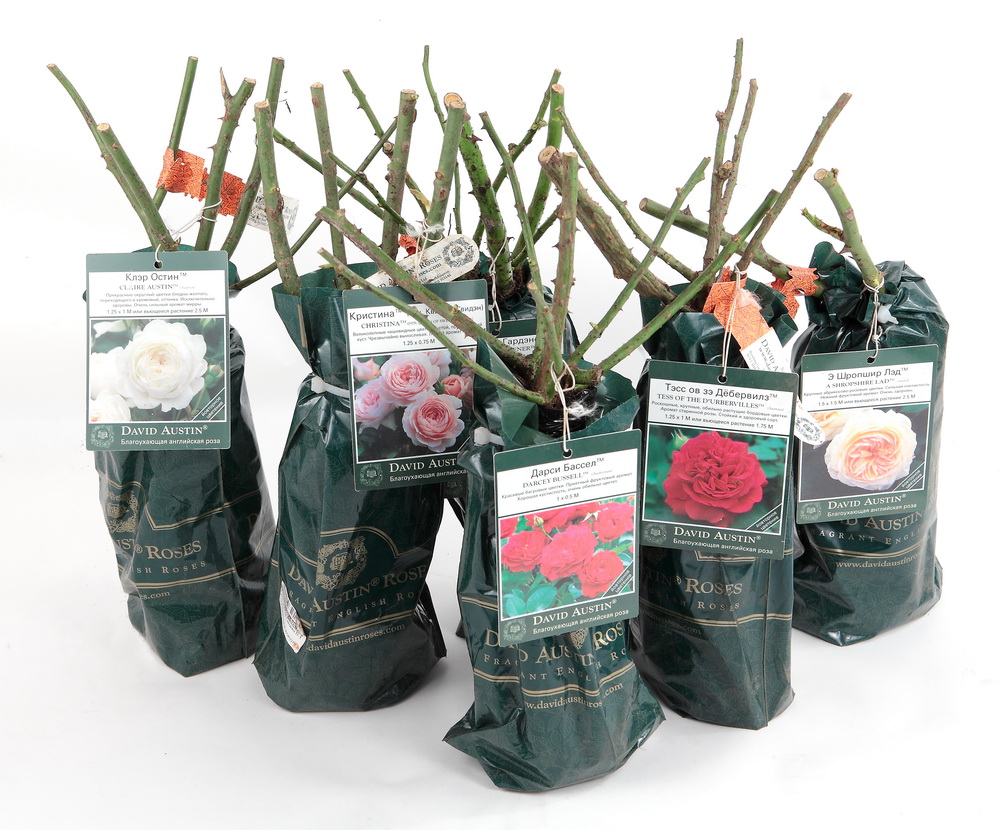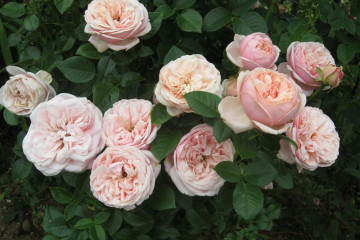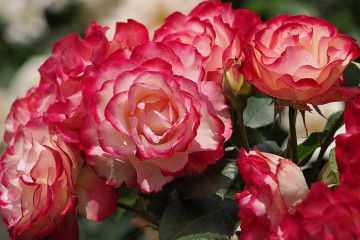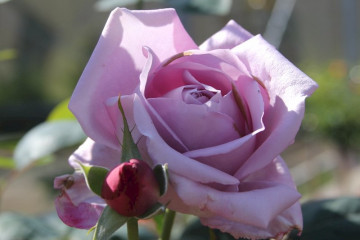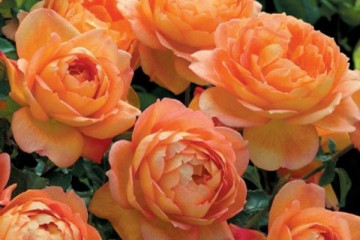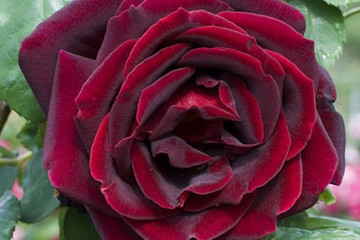Rose Princess Anne (Princess Anne) - variety description
Content:
A revolutionary variety of bush roses grown in the UK, it is attracting the attention of gardeners. These flowers are quite versatile, they look great in landscaping and are great for making bouquets.
Roses Princess Anna: variety description
Rose Princess Anna amazes with splendor. This is a classic version of an English garden rose. The flower of this variety has a bright pink, or even almost red color. The buds are conical at the beginning of flowering, and goblet at the peak. Inflorescences can be pleasing to the eye throughout the summer. The diameter of the flowers varies between 8-12 centimeters. Rose has a pleasant light tea aroma.
Flower advantages:
- long flowering period;
- great for decorating landscape design;
- resistant to disease.
Of the minuses, the following points should be noted:
- towards the end of summer, foliage turns pale green;
- difficult to reproduce;
- fades quickly.
The variety of roses Princess Anna is very often used by designers as landscaping and decoration of the territory. The company for this variety in the flowerbed will be able to make up:
- bells;
- geranium;
- peonies;
- phlox;
- hydrangea.
The history of the origin of the rose dates back to 2010, it was then that botanist David Austin was able to select this plant. The name that was assigned to the hybrid belongs to the princess of Great Britain.
Information on the correct planting of a rose
Planting a rose is not an easy task. You can propagate this flower with the help of seeds, seedlings, or you can graft a new variety into an existing rose bush.
It is known that Princess Anne rose loves sun and partial shade in the same size. The flower should grow in a well-ventilated area, but without strong gusts of wind, and there should be enough sun, but so that the daytime heat does not burn the delicate petals.
The most optimal time for planting in open ground is late April-early May. At the same time, the soil should not be frozen, but should be perfectly amenable to drainage. Before planting, it is imperative to fill the ground with mineral fertilizers.
The most popular way to grow this flower is to plant ready-made seedlings. Choosing for planting is a healthy plant with a strong root system. It is worth inspecting the stems in advance for rot and other diseases. Planting is best done in mid-spring, when the night frosts have already receded, and during the day the temperature is confidently kept within 15-17 degrees. Correct step-by-step planting of roses:
- The seedlings should be placed in a liquid root growth stimulant for several hours.
- A hole is dug with a depth of 50-60 centimeters, all weeds are removed from the soil.
- Before planting, it is better to loosen the soil well and feed it with mineral fertilizer.
- The treated roots must be immersed in the dug hole, to a depth of 5-7 centimeters.
- After the seedling is covered with an earthen mound, it is necessary to water the plant with warm water.
How to care for a plant
Despite the fact that Princess Anne Rose is not the most whimsical representative of the whole family, she needs care. The optimum temperature at which a plant is active in growth varies from 17 to 25 degrees.
The frequency of watering also affects the plant. Park roses need moderate watering as the topsoil dries out. Watering should be done in the first half of the day, but not more often than once a week. Care must be taken to ensure that no water gets on the leaves and buds of the plant. Loosening the soil twice a week is a must to enrich the roots with oxygen. In order for the rose to grow upward, it is necessary to carry out a thorough weeding. To reduce the amount of weeding, you can sprinkle the hole with sawdust.
Fertilization of the soil should be carried out twice a season. It is best to do this in early spring and during the active flowering of the plant. At the end of summer, the feeding process must be completed.
It is necessary to cut the plant twice (in autumn and spring) for sanitary purposes and for better flowering during the entire growth of the rose bush.
For the winter, the plant needs to be covered only in that climatic zone where the air temperature drops below 5 degrees. In other regions, you just need to cultivate the soil, carry out a thorough drainage, cut it and leave it until spring.
The flowering period of the rose and its reproduction
The first inflorescences on the rose begin to appear in early June and last until the first frost. During flowering, the plant gives off many nutrients that must be replenished by feeding it with humus and fertilizing the soil with nitrogen.
In case of untimely pruning of shoots, feeding with poor-quality fertilizer or abundant watering of the plant, root rot may develop, contributing to the wilting of the plant.
Reproduction can be done in two ways:
- a popular way is grafting. Breeding should be done from July to late autumn. A 45-degree incision should be made over the kidney. The cut shoot must be dipped into a root stimulant for a couple of hours. After it is planted in a hole to a depth of several centimeters, they fall asleep, watered and covered with a plastic bottle so that the temperature does not drop below 23 degrees;
- dividing the bush is a less traditional way. Before dividing the bush by roots, you need to make sure that at least 4-5 shoots remain on each. You need to pour mineral fertilizer into the hole, process the roots with a high-quality solution of droppings and clay, and then plant a bush.
Diseases and pests
This hybrid of varietal roses is practically not susceptible to any diseases. Previously, only: gray and root rot, which occurs due to excessive watering of the plant, were recorded.
Thus, the royal species of varietal roses Princess Anna was bred for the purpose of diversifying the landscape design of park and garden areas. Unpretentious care and ease of reproduction make it easy to grow a rose in any area.


